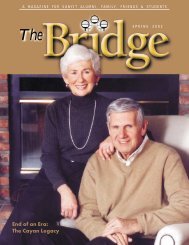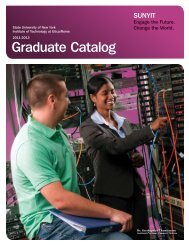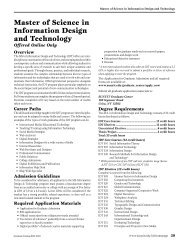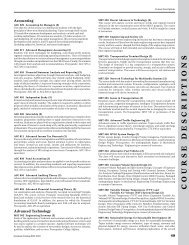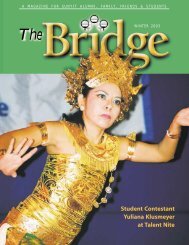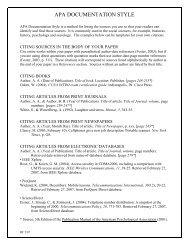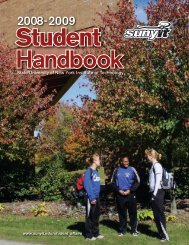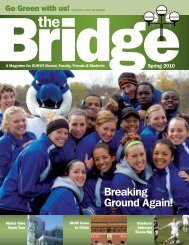Expanding the Public Sphere through Computer ... - ResearchGate
Expanding the Public Sphere through Computer ... - ResearchGate
Expanding the Public Sphere through Computer ... - ResearchGate
You also want an ePaper? Increase the reach of your titles
YUMPU automatically turns print PDFs into web optimized ePapers that Google loves.
CHAPTER 5. MEASURING THE PUBLIC SPHERE 70<br />
one year period. This section describes <strong>the</strong> criteria used to select <strong>the</strong> case study,<br />
and details <strong>the</strong> procedures used to collect and analyze <strong>the</strong> data.<br />
Once a decision was reached to study <strong>the</strong> structure of Usenet newsgroups, <strong>the</strong>re<br />
were essentially two methodological options available (assuming a limit to <strong>the</strong><br />
amount of data that was to be processed). One option was to select a number<br />
of groups and examine <strong>the</strong> patterns of interaction across groups over a relatively<br />
short period of time. The advantage of this option is <strong>the</strong> increased generalizability<br />
that results from patterns observed in several groups. In addition, <strong>the</strong> multi-group<br />
analysis method allows <strong>the</strong> content area of <strong>the</strong> group to be a variable. The second<br />
option was to select a single group and examine patterns of interaction across<br />
a relatively long period of time. The advantages of this option is <strong>the</strong> increased<br />
ability to detect and understand subtle patterns of interaction. This study adopted<br />
<strong>the</strong> second option, and uses <strong>the</strong> case study method to examine structural patterns<br />
within a single newsgroup.<br />
The talk.abortion newsgroup selected for analysis is focused on “all sorts of discussion<br />
about abortion and <strong>the</strong> abortion issue” This issue, as discussed in Chapter<br />
4 on page 57, is an important ongoing public issue with unresolved aspects<br />
featured in public discourse (Ferree & Gamson 1993). The nature of <strong>the</strong> abortion<br />
issue requires a well-constructed public sphere in order for a democratic resolution<br />
to emerge, and it is particularly dependent on a strong and active informal<br />
public sphere, given <strong>the</strong> direct links between personal beliefs, personal behavior,<br />
and public actions. At <strong>the</strong> same time, <strong>the</strong> abortion issue may be particularly well<br />
suited to computer-mediated discussion; given <strong>the</strong> very personal nature of this issue,<br />
many people who may be reluctant to engage in discussion traditional settings<br />
(Noelle-Neuman 1984, Salmon & Neuwirth 1990, MacKuen 1990) may find an<br />
alternative in <strong>the</strong> computer-mediated setting. The benefit from an intensive, overtime<br />
examination of <strong>the</strong> patterns of behavior within a single group struggling to<br />
discuss a controversial, emotional and political issue outweighed whatever limitations<br />
are present as a result of <strong>the</strong> focus on just one group, and perhaps especially<br />
a group focused on this topic.<br />
Before proceeding, it may be helpful to introduce and define several “terms of art”<br />
that are used <strong>through</strong>out <strong>the</strong> remainder of <strong>the</strong> <strong>the</strong>sis:<br />
Message A message or newsgroup article is a self-contained collection of words<br />
written by a single author and contributed to <strong>the</strong> newsgroup as a unique<br />
entity at a specific time. Each message can be identified by its day, author,



